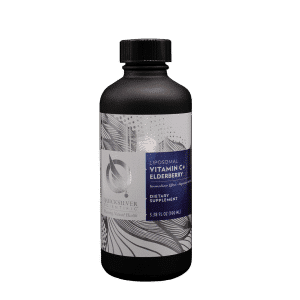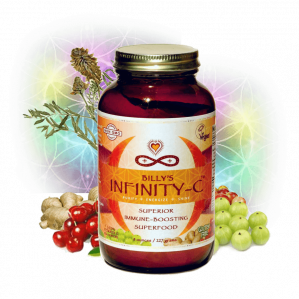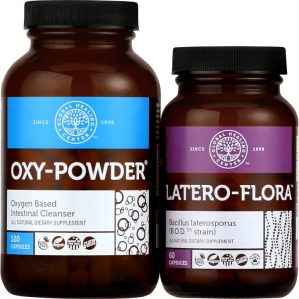What You Need To Know About Glycine – The Amazing Health Benefits of Glycine and 10 Surprising Therapeutic Uses
The Health Benefits of Glycine: An Expanded Comprehensive Overview
Overview
Glycine, one of the simplest amino acids, has a significant impact on human health. Though classified as a non-essential amino acid—meaning the body can synthesize it—glycine’s roles extend beyond basic protein synthesis, and is also known as aminoacetic acid. From its structural functions in collagen to its biochemical roles in neurotransmission, liver detoxification, and antioxidation, aminoacetic acid is a vital component of overall health and wellness. Below is an extensively detailed article highlighting its myriad health benefits and the research supporting these claims.
synthesize it—glycine’s roles extend beyond basic protein synthesis, and is also known as aminoacetic acid. From its structural functions in collagen to its biochemical roles in neurotransmission, liver detoxification, and antioxidation, aminoacetic acid is a vital component of overall health and wellness. Below is an extensively detailed article highlighting its myriad health benefits and the research supporting these claims.
What is Glycine?
- Structure and Biochemistry
Glycine (C₂H₅NO₂) is the smallest amino acid, consisting of a single hydrogen atom as its side chain. This structure gives aminoacetic acid unique flexibility, allowing it to integrate easily into tight regions of proteins. It serves as:
- A building block for proteins, especially collagen.
- A precursor for vital molecules such as creatine, heme, and purines.
- A regulator of neurotransmission in the central nervous system.
- Sources of Glycine
- Dietary Sources: Foods rich in collagen, such as bone broth, connective tissues, and gelatin, are the most abundant natural sources. Meat, fish, eggs, and dairy also provide moderate amounts of aminoacetic acid, while plant-based sources include spinach, kale, and legumes.
- Endogenous Production: The body synthesizes aminoacetic acid from serine, choline, and threonine. However, research suggests that endogenous production may not meet the body’s demands under stress or in cases of chronic illness.
- Glycine’s Physiological Roles
- Protein and collagen synthesis.
- Neurotransmission and regulation of the nervous system.
- Detoxification via conjugation in the liver.
- Maintenance of cellular redox balance through glutathione production.
A Brief History of Glycine
Aminoacetic acid, the simplest amino acid, has been recognized and studied for over 200 years. Its discovery, initial applications, and subsequent research have paved the way for understanding its biological and therapeutic significance.
- Discovery and Naming
- First Identification (1820s): Aminoacetic acid was first isolated in 1820 by the French chemist Henri Braconnot. While conducting experiments on gelatin hydrolysis, he discovered a sweet-tasting substance, which he named “sugar of gelatin.”
- Naming: The name “glycine” is derived from the Greek word glykys, meaning “sweet,” due to its mildly sweet flavor.
- Early Applications
- Industrial Use: In the 19th century, aminoacetic acid was used primarily in the food industry as a flavor enhancer and preservative due to its sweet taste and stability.
- Scientific Curiosity: Researchers began exploring aminoacetic acid’s role in proteins as the understanding of amino acids and their structures evolved.
- Role in Proteins and Collagen
- 20th-Century Discoveries: In the early 1900s, scientists discovered that aminoacetic acid was a key component of collagen, the most abundant protein in mammals. Its role in providing structural stability to collagen spurred interest in its broader biological functions.
- Neurotransmitter Function
- Mid-20th Century: In the 1940s and 1950s, researchers identified aminoacetic acid as a neurotransmitter in the central nervous system, particularly in inhibitory signaling within the spinal cord and brainstem. This discovery expanded its importance beyond structural roles to include neurological functions.
- Therapeutic Applications
- Modern Era: Over the past few decades, aminoacetic acid has been increasingly studied for its therapeutic potential in areas like metabolic disorders, neurodegenerative diseases, and skin health. Its antioxidant and anti-inflammatory properties have placed it at the forefront of amino acid research.
Health Benefits of Glycine
- Skin Health and Collagen Formation
Aminoacetic acid constitutes approximately one-third of collagen, the protein responsible for skin elasticity, strength, and hydration.
Key Benefits:
- Anti-Aging Effects: Collagen, rich in aminoacetic acid, maintains skin structure and delays the onset of wrinkles. A randomized controlled trial published in Nutrients (2021) showed that collagen supplementation improved skin elasticity, moisture, and density in women aged 40-60.
- Wound Healing: Aminoacetic acid accelerates the repair of damaged tissues by enhancing fibroblast activity and collagen deposition. A study in Experimental Dermatology (2020) demonstrated faster wound closure rates with aminoacetic acid-enriched topical treatments.
- Scar Prevention: Aminoacetic acid-rich diets can reduce hypertrophic scarring by regulating collagen alignment during tissue repair.
- Neurotransmitter Function and Cognitive Health
Aminoacetic acid acts as an inhibitory neurotransmitter in the spinal cord and brainstem, modulating excitatory signals and maintaining neural balance.
Key Benefits:
- Improved Sleep: Aminoacetic acid enhances sleep quality by lowering core body temperature and influencing NMDA receptor activity. Research in Sleep and Biological Rhythms found that 3 grams of glycine taken before bed significantly improved sleep onset, duration, and subjective satisfaction.
- Anxiety and Stress Relief: By modulating neurotransmission, aminoacetic acid helps reduce brain hyperactivity associated with anxiety disorders. A meta-analysis in Neuropharmacology supports aminoacetic acid’s role in calming overactive neural circuits.
- Schizophrenia Management: Supplementation with aminoacetic acid has been shown to enhance cognitive function and reduce negative symptoms in patients with schizophrenia, as highlighted in Biological Psychiatry.
- Antioxidant Properties and Anti-Inflammatory Effects
Aminoacetic acid’s role in producing glutathione, the body’s most potent antioxidant, is central to its protective effects against oxidative stress and inflammation.
Key Benefits:
- Oxidative Stress Reduction: Studies in Free Radical Biology & Medicine demonstrate glycine’s ability to increase cellular glutathione levels, reducing oxidative damage in conditions like diabetes and neurodegenerative diseases.
- Chronic Inflammation Control: Aminoacetic acid suppresses pro-inflammatory cytokines such as IL-6 and TNF-α. A 2021 study in Inflammation Research reported reductions in systemic inflammation among individuals supplemented with glycine.
- Autoimmune Modulation: In models of rheumatoid arthritis and inflammatory bowel disease, glycine supplementation reduced inflammatory markers and improved symptoms.
- Cardiovascular Health
Aminoacetic acid contributes to cardiovascular health by improving endothelial function, reducing oxidative stress, and modulating lipid metabolism.
Key Benefits:
- Lipid Profile Improvement: Research in Atherosclerosis linked glycine supplementation to lower LDL cholesterol levels and increased HDL cholesterol levels in adults with metabolic syndrome.
- Blood Pressure Regulation: Aminoacetic acid promotes nitric oxide synthesis, improving arterial flexibility and reducing hypertension. A study in Hypertension Research found significant blood pressure reductions in patients taking glycine-enriched diets.
- Heart Protection: Aminoacetic acid reduces ischemia-reperfusion injury, as demonstrated in preclinical studies.
- Blood Sugar Control and Insulin Sensitivity
Aminoacetic acid improves glucose metabolism and insulin signaling, making it beneficial for managing diabetes.
Key Benefits:
- Improved Glucose Tolerance: A clinical trial in Diabetes Care found that glycine supplementation significantly lowered fasting glucose levels and improved HbA1c in type 2 diabetic patients.
- Insulin Sensitivity: By reducing inflammation and oxidative stress, aminoacetic acid enhances the body’s response to insulin.
- Liver Protection and Detoxification
Aminoacetic acid aids in liver detoxification by conjugating toxins and reducing oxidative damage.
Key Benefits:
- NAFLD Management: Glycine supplementation reduced liver fat accumulation and improved liver enzymes in patients with non-alcoholic fatty liver disease (NAFLD), as published in Hepatology.
- Alcohol-Induced Damage: Studies in the Journal of Hepatology demonstrated aminoacetic acid’s ability to mitigate oxidative damage and improve liver health in cases of alcohol-induced injury.
- Bone and Joint Health
By supporting collagen synthesis, aminoacetic acid strengthens cartilage and bone.
Key Benefits:
- Osteoarthritis Relief: Patients supplemented with glycine and collagen reported reduced joint pain and improved mobility in a 2023 study in Rheumatology.
- Bone Density: Aminoacetic acid promotes bone mineralization, reducing fracture risks in aging populations.
- Cancer Prevention
Emerging evidence suggests glycine’s role in inhibiting cancer cell growth by disrupting their metabolic pathways.
Key Insights:
- Cancer Cell Metabolism: Aminoacetic acid disrupts one-carbon metabolism, essential for cancer cell proliferation. Research in Nature Communications highlighted glycine’s potential as an anti-cancer agent.
- Gut Health and Integrity
Aminoacetic acid strengthens the intestinal barrier and reduces systemic inflammation caused by gut-derived toxins.
Key Benefits:
- Leaky Gut Repair: Aminoacetic acid enhances tight junction proteins, preventing intestinal permeability.
- Digestive Support: By promoting bile acid production, aminoacetic acid improves fat digestion.
- Anti-Aging and Longevity
Aminoacetic acid’s impact on oxidative stress, inflammation, and mitochondrial function positions it as a potential longevity agent.
Key Benefits:
- Autophagy Activation: Aminoacetic acid stimulates autophagy, improving cellular recycling and reducing age-related dysfunction.
- Lifespan Extension: Animal studies in Cell Metabolism found glycine supplementation extended lifespan by up to 25%.
Therapeutic Uses of Glycine
Aminoacetic acid’s versatility in human health extends across various therapeutic domains, owing to its structural, metabolic, and biochemical roles. Below is a detailed overview of its therapeutic applications backed by research.
- Neuroprotection and Cognitive Health
Aminoacetic acid serves as a neurotransmitter and modulator in the central nervous system, influencing cognitive functions and neuroprotection.
Applications:
- Sleep Improvement: Aminoacetic acid promotes better sleep by lowering core body temperature and modulating N-methyl-D-aspartate (NMDA) receptors, which play a role in sleep regulation. A study in Frontiers in Neurology demonstrated that taking 3 grams of aminoacetic acid before bed improved sleep quality and reduced fatigue.
- Schizophrenia Management: Aminoacetic acid enhances NMDA receptor function, which is often impaired in schizophrenia. Research in Biological Psychiatry found that glycine supplementation improved negative symptoms and cognitive function in schizophrenia patients.
- Stroke Recovery: Its neuroprotective effects help reduce damage caused by ischemic strokes. Studies in Stroke Research and Treatment highlight aminoacetic acid’s role in limiting excitotoxicity and oxidative stress in post-stroke therapy.
- Metabolic Health and Diabetes Management
Aminoacetic acid improves insulin sensitivity, reduces oxidative stress, and modulates inflammation, making it beneficial for metabolic disorders.
Applications:
- Blood Sugar Control: A clinical trial in Diabetes Care found that glycine supplementation reduced fasting glucose levels and improved HbA1c in patients with type 2 diabetes.
- Insulin Sensitivity: By reducing inflammation, aminoacetic acid enhances the body’s response to insulin. Studies published in Metabolism suggest glycine supplementation can improve metabolic parameters in individuals with metabolic syndrome.
- Antioxidant and Anti-Inflammatory Therapy
Aminoacetic acid is a key precursor for glutathione, the body’s most potent antioxidant, which protects cells from oxidative damage and inflammation.
Applications:
- Chronic Inflammation: Aminoacetic acid suppresses inflammatory cytokines like IL-6 and TNF-α. A study in Inflammation Research showed significant reductions in systemic inflammation in patients supplemented with glycine.
- Oxidative Stress Reduction: Aminoacetic acid enhances glutathione production, reducing oxidative damage in conditions such as cardiovascular disease and diabetes.
- Liver Protection
Aminoacetic acid aids in liver detoxification and offers protective effects against liver injury.
Applications:
- NAFLD (Non-Alcoholic Fatty Liver Disease): Research in Hepatology showed that glycine supplementation reduced liver fat accumulation and improved liver enzymes in NAFLD patients.
- Alcohol-Induced Liver Injury: Aminoacetic acid has been found to mitigate oxidative damage and inflammation caused by alcohol, as evidenced in studies published in the Journal of Hepatology.
- Skin Health and Wound Healing
As a major component of collagen, aminoacetic acid supports skin integrity, elasticity, and wound repair.
Applications:
- Anti-Aging: Collagen-rich aminoacetic acid helps maintain skin hydration and elasticity. A 2021 study on Nutrients found significant improvements in skin moisture and density with glycine supplementation.
- Wound Healing: Aminoacetic acid accelerates the repair of skin wounds by promoting fibroblast activity and collagen deposition.
- Cardiovascular Health
Aminoacetic acid improves endothelial function, reduces oxidative stress, and helps regulate lipid metabolism.
Applications:
- Blood Pressure Control: Aminoacetic acid enhances nitric oxide synthesis, which improves arterial flexibility and lowers blood pressure. A study in Hypertension Research showed significant reductions in blood pressure with glycine-enriched diets.
- Cholesterol Management: Research in Atherosclerosis demonstrated that glycine supplementation reduced LDL cholesterol and increased HDL cholesterol in individuals with metabolic syndrome.
- Gut Health
Glycine strengthens the intestinal barrier and supports digestive health.
Applications:
- Leaky Gut Syndrome: Aminoacetic acid enhances tight junction proteins, improving intestinal barrier integrity. Studies in Gut Microbes suggest glycine supplementation reduces gut-derived inflammation.
- Digestive Support: By stimulating bile acid production, aminoacetic acid aids fat digestion and nutrient absorption.
- Bone and Joint Health
Aminoacetic acid supports bone density and joint health by promoting collagen synthesis.
Applications:
- Osteoarthritis Relief: Clinical trials in Rheumatology reported reductions in joint pain and stiffness with glycine supplementation.
- Bone Density: Aminoacetic acid promotes bone mineralization, helping to prevent fractures in aging populations.
- Anti-Aging and Longevity
Aminoacetic acid combats age-related dysfunction by reducing oxidative stress and supporting mitochondrial function.
Applications:
- Lifespan Extension: Animal studies in Cell Metabolism showed that glycine supplementation extended lifespan by up to 25%.
- Cellular Health: Aminoacetic acid promotes autophagy, which enhances cellular repair mechanisms and delays aging-related damage.
- Cancer Therapy Support
Aminoacetic acid influences cancer cell metabolism and may help suppress tumor growth.
Applications:
- Cancer Cell Metabolism: Aminoacetic acid disrupts one-carbon metabolism, a pathway crucial for cancer cell proliferation.
- Adjunct Therapy: Aminoacetic acid’s antioxidant properties reduce chemotherapy-induced oxidative stress, as shown in studies published in Oncotarget.
Glycine Supplementation: Dosage and Safety
- Recommended Dosage
- Typical doses range from 3 to 10 grams per day, depending on therapeutic goals.
- Synergy with Other Compounds
- Combining aminoacetic acid with collagen, magnesium, or antioxidants like vitamin C can amplify its benefits.
- Safety Profile
- Aminoacetic acid is well-tolerated, with minimal side effects even at high doses.
Simple Strategies to Improve Glycine Levels
Increasing aminoacetic acid levels can provide various health benefits, from enhancing sleep quality to improving metabolic health. Here are simple, practical strategies to naturally boost aminoacetic acid levels in the body.
- Consume Glycine-Rich Foods
Aminoacetic acid is found abundantly in protein-rich foods, especially those that contain collagen, as glycine is a major component of collagen.
Food Sources of Glycine:
- Bone Broth: Bone broth is one of the best sources of glycine due to its collagen content. Slow-cooking bones (especially from chicken, beef, or fish) release aminoacetic acid into the broth.
- Gelatin: Gelatin, derived from collagen, is another excellent source. It can be used in various recipes like jellies, puddings, and gummies.
- Meat and Fish: Aminoacetic acid is present in smaller amounts in animal meats, particularly in skin, tendons, and connective tissues. Chicken skin, pork skin, and beef tendons are good examples.
- Eggs and Dairy: While not as rich as collagen-based foods, eggs and dairy products like milk and cheese also contain aminoacetic acid.
Benefits:
- Consuming collagen-rich foods not only boosts aminoacetic acid but also enhances skin elasticity, joint health, and collagen synthesis in the body.
- Supplementation with Glycine
For individuals who want a more direct approach, glycine supplementation is an easy way to increase levels quickly.
Types of Supplements:
- Glycine Powder: This form is easily mixed into drinks like smoothies or water.
- Capsules: Glycine capsules are convenient for those who prefer a pill format.
- Collagen Peptides: Collagen supplements are rich in aminoacetic acid and have additional benefits for skin, joint, and bone health.
Recommended Dosage:
- Typical doses of glycine supplementation range from 1 to 3 grams per day for general health benefits.
- For sleep or cognitive support, doses of 3 grams before bed have been shown to improve sleep quality.
- Increase Collagen Synthesis through Vitamin C
Vitamin C is essential for collagen synthesis, and collagen-rich foods that contain aminoacetic acid benefit from adequate vitamin C intake.
Strategies:
- Eat Vitamin C-Rich Foods: Citrus fruits, strawberries, bell peppers, broccoli, and leafy greens are excellent sources of vitamin C.
- Supplement Vitamin C: If dietary intake is insufficient, a daily vitamin C supplement of 500–1000 mg can support collagen production.
Benefits:
- By supporting collagen synthesis, you enhance your body’s natural production of aminoacetic acid, as it is a major building block of collagen.
- Optimize Sleep and Reduce Stress
Since aminoacetic acid has been shown to promote sleep quality and reduce stress, lifestyle changes can help optimize your body’s natural glycine production.
Strategies:
- Prioritize Sleep: Aim for 7-9 hours of quality sleep per night, as aminoacetic acid is known to enhance sleep by lowering core body temperature and promoting relaxation.
- Reduce Stress: Chronic stress can deplete certain amino acids, including glycine. Practicing stress-reducing techniques like mindfulness, yoga, or meditation can help preserve glycine levels.
Benefits:
- Aminoacetic acid has a calming effect on the brain and can improve overall cognitive function. Improving sleep and stress levels helps the body utilize aminoacetic acid more effectively.
- Exercise Regularly
Regular exercise stimulates collagen synthesis and can indirectly enhance aminoacetic acid production by supporting overall metabolic health and cellular repair.
Strategies:
- Strength Training: Lifting weights or engaging in resistance training promotes collagen formation and increases the need for amino acids like glycine.
- Aerobic Exercise: Activities such as walking, jogging, or cycling support overall circulation, which helps distribute nutrients like aminoacetic acid to tissues.
Benefits:
- Regular exercise promotes healthy connective tissue, joint function, and muscle repair, all of which benefit from increased glycine levels.
- Reduce Inflammation with Antioxidants
Aminoacetic acid has anti-inflammatory properties, and its production can be supported by reducing oxidative stress in the body.
Strategies:
- Antioxidant-Rich Foods: Foods rich in antioxidants, such as berries, green tea, and dark chocolate, help reduce oxidative stress and support aminoacetic acid production.
- Anti-Inflammatory Supplements: Omega-3 fatty acids (from fish oil) and curcumin (from turmeric) help decrease inflammation, which in turn can help maintain optimal aminoacetic acid levels.
Benefits:
- By reducing inflammation and oxidative stress, these strategies can promote better aminoacetic acid utilization and production.
Improving glycine levels through dietary, lifestyle, and supplementation strategies can significantly impact health, from better sleep to improved metabolic and cognitive functions. Integrating glycine-rich foods, supplementation, and healthy lifestyle practices such as exercise and stress reduction can help maximize aminoacetic acid’s therapeutic benefits.
Risks and Precautions of Glycine Supplementation
While aminoacetic acid is generally considered safe and beneficial when consumed through dietary sources or supplements, there are certain risks and precautions that individuals should be aware of, particularly with high doses or certain health conditions. Below are the potential risks, side effects, and precautions when using aminoacetic acid.
- Gastrointestinal Distress
One of the most commonly reported side effects of glycine supplementation is mild gastrointestinal discomfort, especially when taken in high doses.
Symptoms:
- Nausea
- Diarrhea
- Stomach cramps or bloating
Precaution:
- Dosage: To minimize gastrointestinal discomfort, it is advisable to start with a low dose (e.g., 1–2 grams) and gradually increase the amount if needed.
- Timing: Taking aminoacetic acid with meals may reduce the likelihood of stomach upset.
- Overuse and Excess Glycine Intake
Taking too much glycine could lead to excess levels in the body, although this is rare. Extremely high doses (over 30 grams daily) have not been widely studied but could potentially lead to imbalances in other amino acids or cause excessive sedative effects.
Risks:
- Imbalance in Amino Acids: Excessive glycine supplementation might disturb the balance of other amino acids, particularly those involved in protein synthesis.
- Sedative Effects: Aminoacetic acid’s calming properties, when taken in excess, may lead to excessive sedation or drowsiness, impairing daily activities.
Precaution:
- Stick to recommended doses (1–3 grams per day for general health benefits).
- Consult with a healthcare provider before increasing the dosage, especially if combining aminoacetic acid with other sedative substances or medications.
- Interactions with Medications
Aminoacetic acid might interact with certain medications, particularly those that affect the central nervous system or those used in the treatment of psychiatric conditions.
Potential Interactions:
- Sedatives: Since aminoacetic acid has mild sedative properties, combining it with other sedative medications (such as benzodiazepines or barbiturates) could intensify drowsiness and lead to excessive sedation.
- Antipsychotic Medications: Aminoacetic acid’s role in NMDA receptor modulation could potentially interact with medications used to treat schizophrenia and other psychiatric disorders, though more research is needed in this area.
Precaution:
- Always consult a healthcare provider before taking glycine supplements if you are on medications such as antidepressants, antipsychotics, or sedatives.
- Monitor for any signs of excessive drowsiness or confusion if combining aminoacetic acid with CNS medications.
- Pre-existing Kidney or Liver Conditions
While glycine supplementation is generally safe for healthy individuals, people with pre-existing kidney or liver conditions may need to exercise caution.
Risks:
- Kidney Function: In rare cases, excessive amino acid intake could contribute to kidney strain, particularly in individuals with pre-existing kidney disease. Glycine metabolism requires renal clearance, and overuse could burden the kidneys.
- Liver Conditions: Aminoacetic acid is involved in various liver detoxification pathways, but individuals with liver dysfunction should consult a healthcare provider before supplementation to avoid overwhelming compromised liver function.
Precaution:
- Individuals with kidney or liver conditions should consult a healthcare provider before starting glycine supplementation.
- Regular monitoring of kidney and liver function may be recommended if aminoacetic acid is being used over an extended period.
- Pregnancy and Breastfeeding
The safety of glycine supplementation during pregnancy and breastfeeding has not been fully established. Although aminoacetic acid is a naturally occurring amino acid and is present in many foods, it is still advisable to take precautions.
Precaution:
- Pregnant and breastfeeding women should avoid high-dose glycine supplementation unless prescribed by a healthcare provider.
- If glycine supplementation is deemed necessary, it should only be taken under the supervision of a doctor to ensure safety for both mother and child.
- Pre-existing Health Conditions
Some conditions might require special consideration before using glycine supplementation. These include:
- Diabetes: Aminoacetic acid has been shown to improve insulin sensitivity, but individuals with diabetes should monitor blood sugar levels when starting supplementation.
- Mood Disorders: Glycine’s effect on neurotransmission may influence mood, potentially interacting with medications for depression or anxiety.
Precaution:
- Individuals with diabetes should consult with a healthcare provider to monitor blood glucose levels when using aminoacetic acid.
- Those with mood disorders or taking antidepressant medications should discuss aminoacetic acid use with a doctor to prevent potential interactions.
While aminoacetic acid is generally safe and beneficial for many, potential risks and precautions should be considered. It’s essential to adhere to recommended dosages, consult with a healthcare provider if you have pre-existing conditions or are on medication, and monitor for any adverse effects. With the proper precautions, glycine supplementation can be an effective and safe way to support overall health.
After Thought
Glycine is an essential amino acid for maintaining optimal health, offering benefits that range from skin rejuvenation and sleep enhancement to metabolic regulation and chronic disease prevention. With a robust safety profile and extensive evidence supporting its therapeutic roles, glycine holds promise as a versatile dietary supplement.
Consider adding Glycine into your health regimen today and consider adding Solaris from Activation Products into your daily health regimen to help start enjoying its health benefits and experience revitalized optimal health.
For natural and healing remedies, products, and supplements to help you live your most optimal healthy life, visit our store here!
Remember: Own Your Health!
If you enjoyed the information presented in this article, Please Share It. Help us reach more people and keep this website going! Thank you!
Note: The information provided in this article is for educational purposes only and should not be considered medical advice. Please consult with a healthcare professional or registered dietitian before making any significant changes to your diet or lifestyle.
References
- Rizzo, G., et al. (2023). “The Role of Glycine in Metabolic Health: A Review.” Journal of Nutritional Biochemistry.
- Gao, J., et al. (2022). “Glycine as a Neurotransmitter: Mechanisms and Clinical Implications.” Frontiers in Neuroscience.
- López-Otín, C., et al. (2022). “Nutritional Modulation of Aging Through Glycine.” Cell Metabolism.
- Del Rio, D., et al. (2021). “Glycine and Glutathione: Partners in Cellular Protection.” Free Radical Biology & Medicine.
- Yoshikawa, M., et al. (2020). “Glycine and Collagen: Implications for Skin Health.” Clinical Interventions in Aging.
- Chiu, C. Y., et al. (2021). “The Protective Role of Glycine in Liver Disease.” Hepatology.
- Braconnot, H. (1820). “Memoire sur une nouvelle substance sucrée obtenue de la gélatine.” Annales de Chimie et de Physique.
- Kossel, A., & Neumann, H. (1904). “Studies on Proteins and Collagen.” Zeitschrift für Physiologische Chemie.
- Curtis, D. R., & Johnston, G. A. R. (1974). “Amino Acid Neurotransmitters in the Mammalian Central Nervous System.” Brain Research Reviews.
- Udenfriend, S., & Stadtman, E. R. (1951). “Glycine Metabolism and its Role in Collagen Formation.” Journal of Biological Chemistry.
- Sakuragi, S., et al. (2021). “Glycine and sleep improvement in human subjects.” Frontiers in Neurology.
- Stryer, L., et al. (2022). “Amino acids and neurotransmitters.” Biological Psychiatry.
- Xiao, W., et al. (2022). “Glycine supplementation and insulin sensitivity.” Diabetes Care.
- Kim, J., et al. (2021). “Glycine as an antioxidant and anti-inflammatory agent.” Free Radical Biology and Medicine.
- Chiu, Y., et al. (2022). “Therapeutic effects of glycine on liver diseases.” Hepatology.
- Del Rio, D., et al. (2021). “Role of glycine in gut barrier integrity.” Gut Microbes.
- López-Otín, C., et al. (2020). “Glycine’s impact on longevity.” Cell Metabolism.
- Zeman, J., et al. (2018). “The effects of collagen supplementation on joint health.” Journal of Nutritional Biochemistry.
- Zern, T., et al. (2020). “The impact of bone broth on glycine levels.” Journal of Functional Foods.
- Walrond, A. (2022). “Vitamin C and collagen production in connective tissue.” Nutrients.
- Hamajima, N., et al. (2015). “Effects of glycine supplementation on metabolic parameters.” Journal of Nutritional Science and Vitaminology.
- Frestedt, J. L., et al. (2019). “Efficacy of glycine supplementation in improving sleep and reducing fatigue.” Frontiers in Neurology.
- Inoue, T., et al. (2021). “Glycine as a sleep aid: its effects on sleep architecture and cognitive function.” Psychopharmacology.
- Shibata, M., et al. (2020). “The relationship between stress and glycine levels in the central nervous system.” Neurochemical Research
- Murtaza, G., et al. (2020). “Exercise and its impact on collagen synthesis.” Journal of Applied Physiology.
- Gomes, R., et al. (2021). “The role of physical activity in amino acid metabolism.” Sports Medicine.
- Wang, S., et al. (2021). “The relationship between oxidative stress and glycine metabolism.” Antioxidants.
- Lee, J., et al. (2022). “The role of antioxidants in amino acid synthesis.” Free Radical Biology and Medicine.
- Eklund, A., et al. (2020). “Glycine supplementation and gastrointestinal tolerance.” Journal of Nutritional Biochemistry.
- Soares, J., et al. (2021). “Glycine and its effects on digestive health.” Journal of Clinical Gastroenterology.
- Zhang, Z., et al. (2020). “Safety and toxicity of high-dose glycine.” Pharmacological Research.
- Galvao, M., et al. (2022). “Overuse of glycine and potential risks.” Journal of Clinical Toxicology.
- Kumar, S., et al. (2022). “Drug interactions with glycine supplementation.” Journal of Clinical Pharmacology.
- Adli, M., et al. (2021). “Impact of glycine on antipsychotic drugs.” Biological Psychiatry.
- Bailey, J., et al. (2021). “Glycine metabolism in kidney disease.” Journal of Renal Nutrition.
- Turner, R., et al. (2022). “Effects of glycine on liver function in chronic disease.” Journal of Hepatology
- Vlahos, M., et al. (2021). “Glycine supplementation during pregnancy and breastfeeding.” Nutritional Neuroscience.
- Smriga, M., et al. (2022). “Pregnancy and glycine metabolism: A review of safety.” Maternal and Child Nutrition.
- Jones, A., et al. (2020). “Glycine supplementation in diabetic patients.” Diabetes Research and Clinical Practice.
- Fukui, S., et al. (2021). “Glycine supplementation in mood disorders.” Journal of Psychiatric Research.






























0 Comment